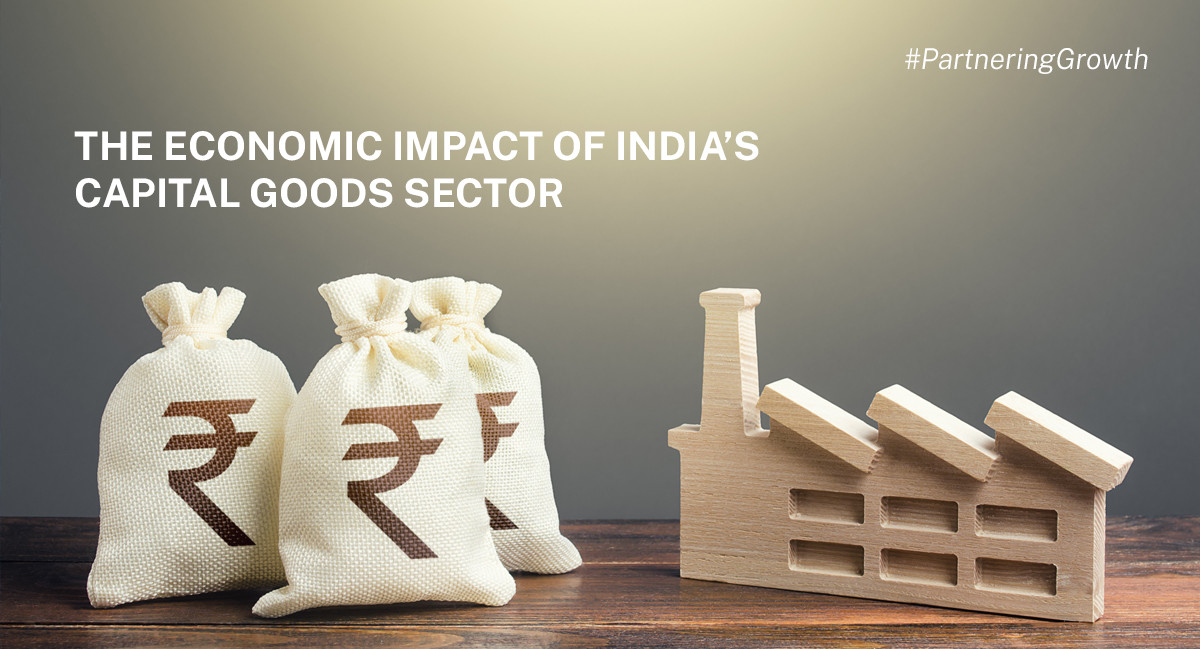


The capital goods sector is the backbone of industrial development, supplying machinery and equipment essential for manufacturing, infrastructure, and other industries, accounting for about 12% of India's total manufacturing output and contributing approximately 1.8% to 1.9% of the country’s GDP as of FY 2024-25. In India, this sector not only drives industrial productivity but also contributes significantly to overall economic growth by enabling efficiency, innovation, and competitiveness across multiple industries.
Applications Across Industries
Capital goods are widely applied across sectors, including:
• Automobiles: Manufacturing of engines, components, and assembly line machinery relies on advanced capital goods.
• Construction and Infrastructure: Cranes, mixers, and specialised equipment enable large-scale infrastructure projects.
• Textiles and Chemicals: Machines for spinning, weaving, dyeing, and processing chemicals depend heavily on domestic capital goods production.
• Energy and Power: Turbines, generators, and renewable energy equipment are critical for energy infrastructure.
This widespread application makes the sector a key driver of industrial efficiency and capacity expansion.
Contribution to Economic Growth
The capital goods sector supports the economy in multiple ways:
• Job Creation: Manufacturing, installation, and maintenance of capital goods generate employment across skill levels.
• Boosting Productivity: High-quality machinery enables faster and more efficient production, enhancing competitiveness.
• Encouraging Innovation: Investments in modern machinery and automation promote research, innovation, and process optimisation.
• Linkages Across Sectors: Capital goods stimulate growth in downstream industries by improving production capacity and quality standards.
For the financial year 2024-25, the production value of the capital goods sector is estimated at around ₹4.62 lakh crore (approximately US$56.2 billion), showing continued growth from around ₹4.29 lakh crore in 2023-24, reflecting strong industrial momentum over the past decade. The production index continued growing overall in 2025, supported by government policies, expansions in manufacturing, and increased global competitiveness of India’s capital goods manufacturing sector.
Policy Support and Emerging Trends
Government initiatives like PLI schemes, industrial corridors, and sector-specific incentives have strengthened the capital goods industry. Emerging trends include:
• Automation and Smart Manufacturing: Industry 4.0 technologies are increasingly being adopted.
• Sustainable Machinery: Environmentally friendly and energy-efficient equipment is gaining importance.
• Export Potential: India is gradually expanding as a supplier of capital goods to other developing economies.
The government’s capital expenditure budget has been raised from ₹10.2 lakh crore in FY 2025 to ₹11.2 lakh crore in FY 2026, fuelling higher demand for capital goods and reinforcing the sector’s role in driving India’s infrastructure and manufacturing ambitions.
Road Ahead
The capital goods sector is poised for sustained growth, driven by infrastructure expansion, domestic manufacturing policies, and technological upgrades. Strategic investments in skill development, R&D, and global collaborations can further enhance India’s capacity to supply high-quality machinery and equipment to both domestic and international markets.